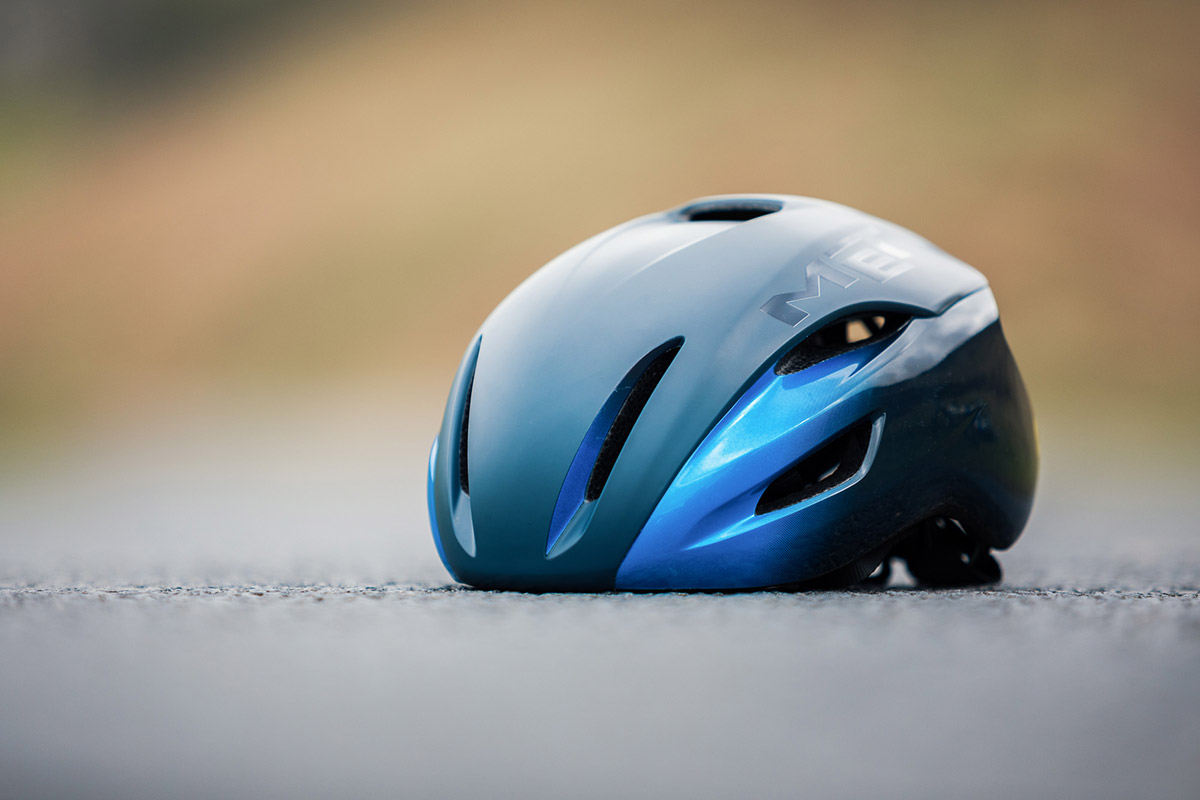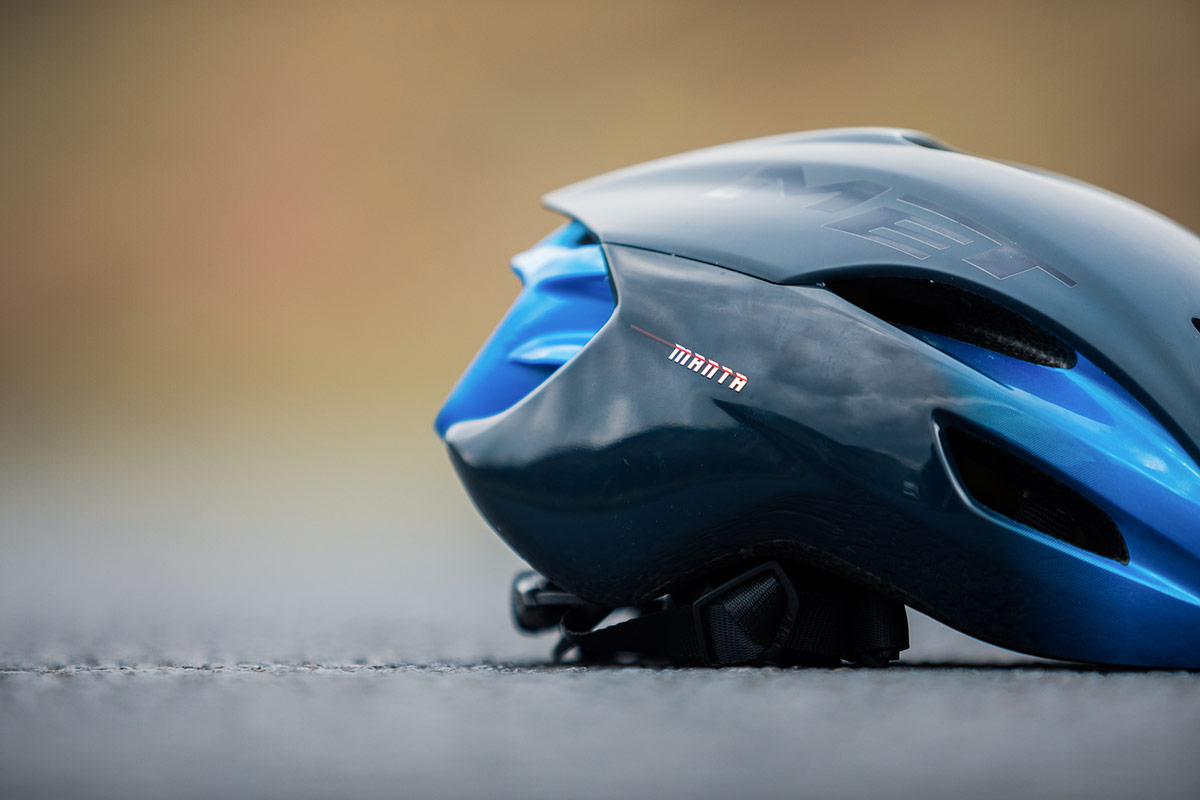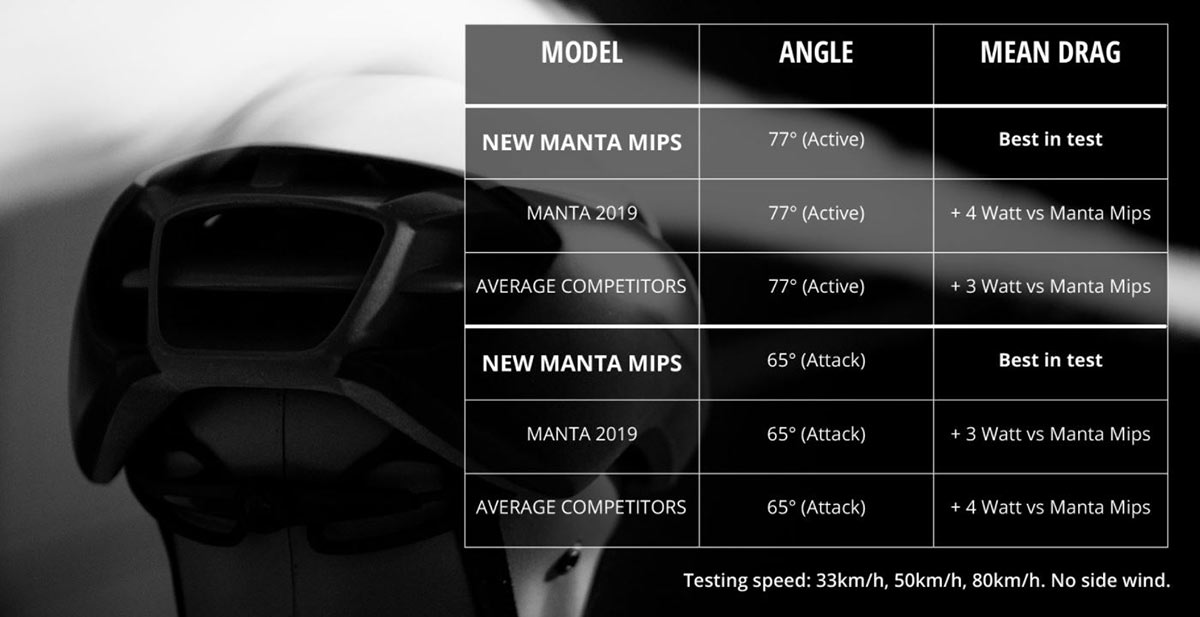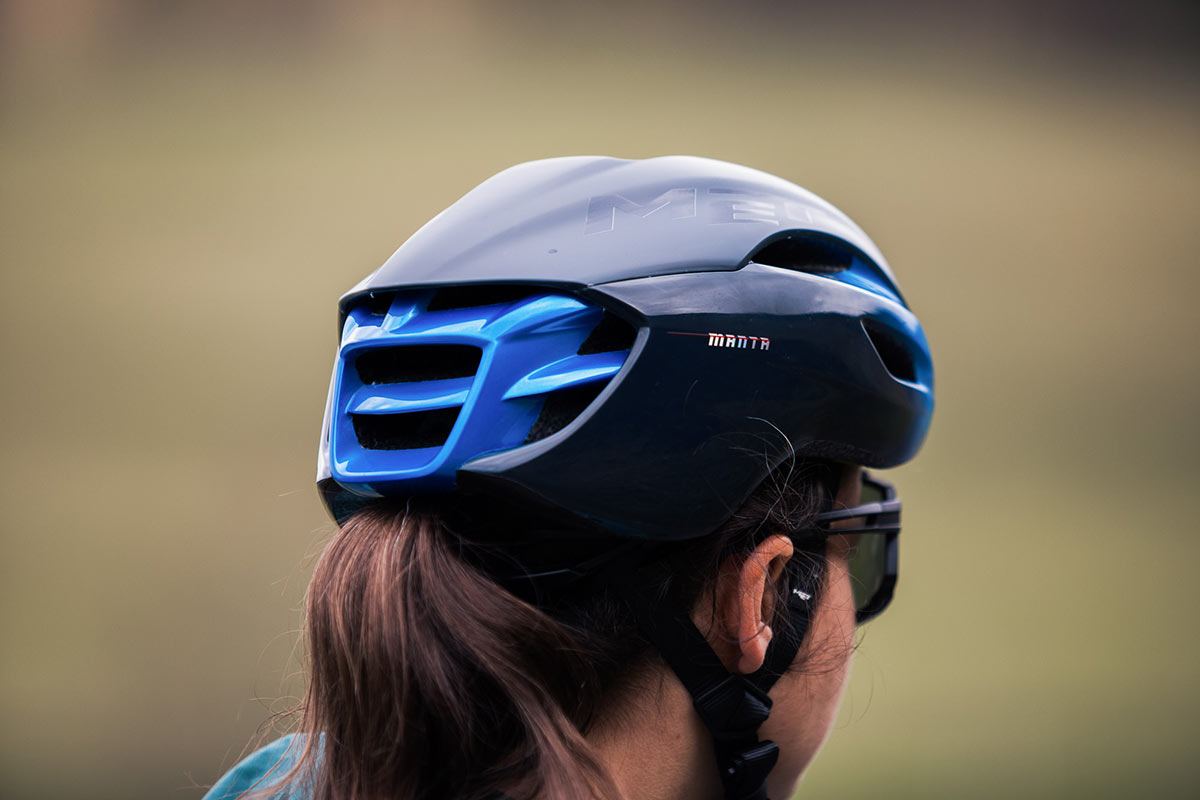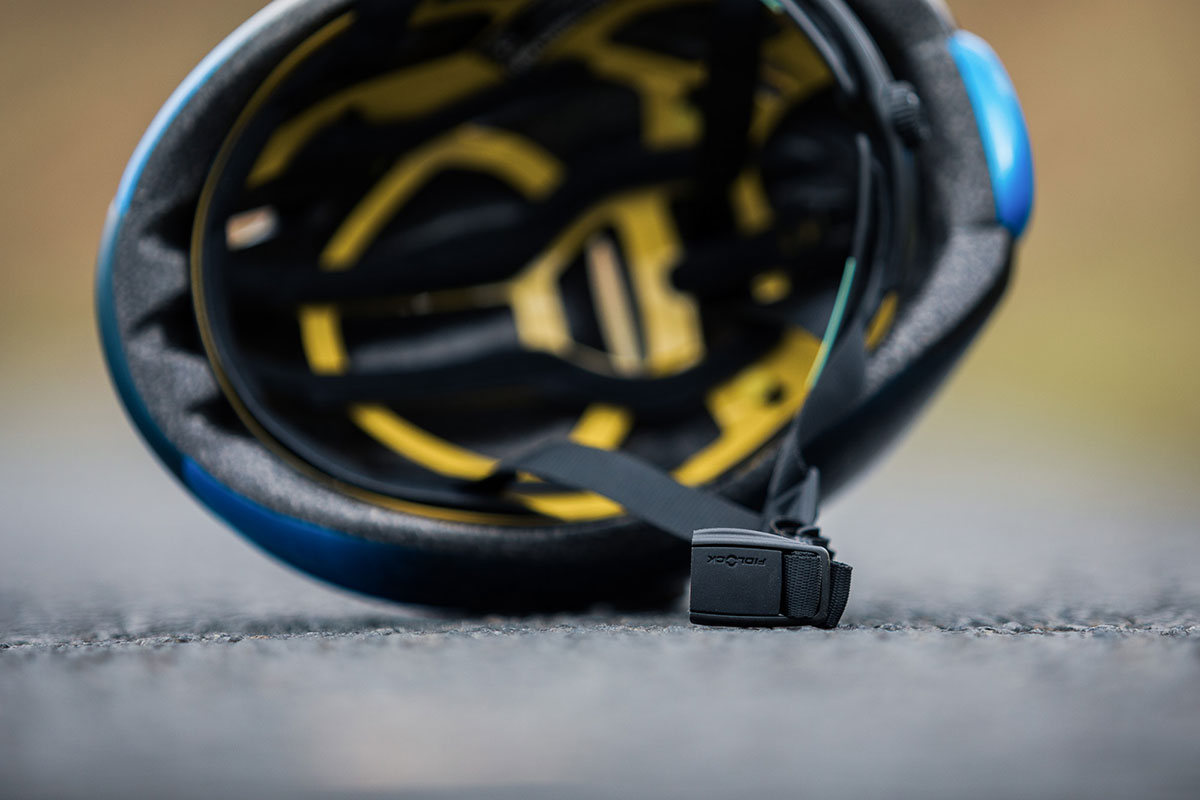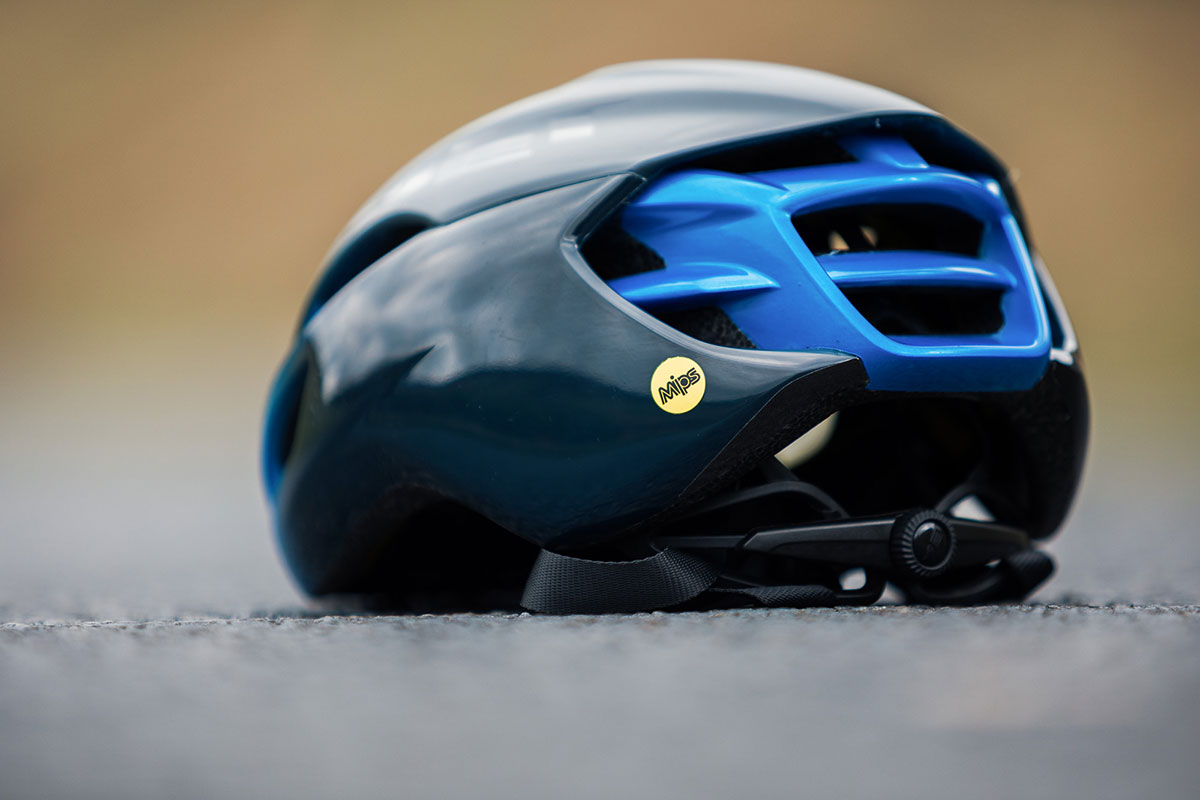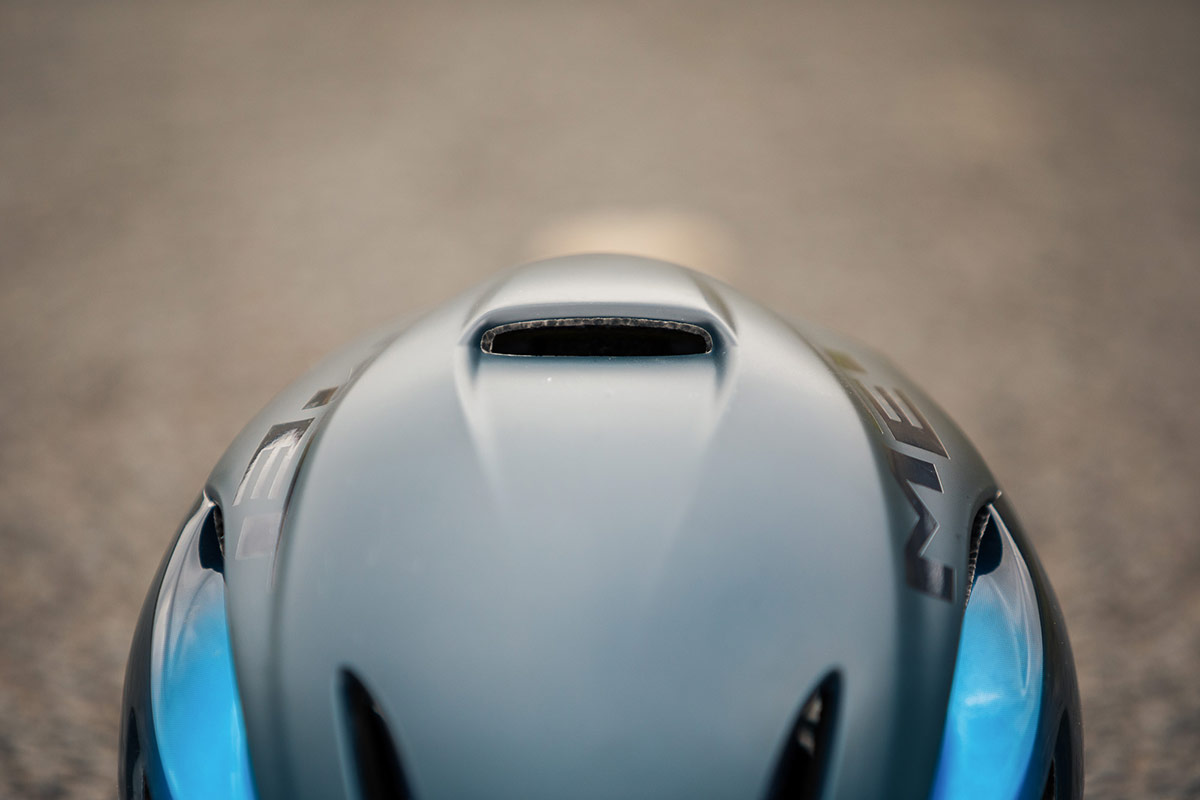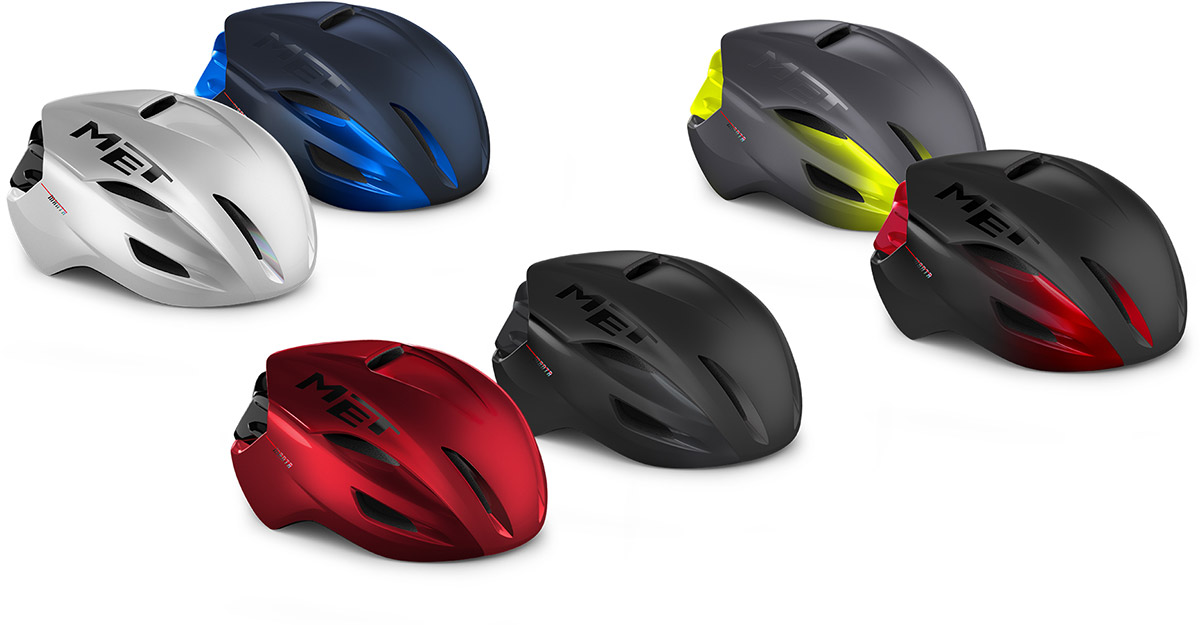MET Helmets recently updated their aero road helmet, the Manta MIPS, a lid originally developed for Mark Cavendish, or the Manx Missile as he is affectionately known. While the aesthetics of this helmet are likely to split opinion, there’s no denying the quality here. With MIPS rotational impact protection, MET’s proprietary NACA vent system and Fidlock magnetic closure, this is a lightweight aerodynamic road helmet packed with top-end features. Here’s our take.
All photos by Finlay Anderson
Review: MET Manta MIPS
The MET Manta MIPS is one of the lightest aero road helmets with the MIPS-C2 protection system on the market today; our Park Tool scales tells us the small we tested weighs just 239g. The medium and large helmets weigh a claimed 250g and 270g, respectively.
So what are the aero claims for this road helmet? MET say the redesign aimed to boost the helmet’s aerodynamic properties with a new lower, tube-shaped profile at the rear. Ulysse Daessle, MET’s marketing manager points us toward the outcome of some wind tunnel tests at the Newton Laboratory of Milan. With the helmet tested at two different angles, it was shown to offer an aero advantage over both the previous Manta helmet of 2019, and over “average competitors”, saving around 3-4 Watts.
The small is recommended for head circumferences of 52cm to 56cm. Mine measures up at 54cm, so how’s the fit? Great, actually. I made good use of the vertical adjustment of the retention system. You can run it at four different heights to dial in the fit, tailoring it to the shape of the back of your head. I ran it in the middle setting, where it cupped the back of my head most securely.
To test the comfort of the Safe-T Orbital head belt, I purposely over-tightened the retention system massively. Doing this revealed no particular pressure points around my skull, just even pressure applied everywhere.
For those cyclists with long hair, it is worth noting that the retention system allows space enough for a ponytail to sit comfortably between the base of the helmet and the adjustment dial. For those who prefer to keep their hair off their back, whether for aesthetic purposes or to prevent unnecessary sweaty horribleness, this is a key feature.

At the other end of the spectrum, there’s something for the bald cyclists, too. You’ll notice that, at the head-interface side of the retention system there are two green rubberized panels. Though I can’t speak from experience, I imagine this will likely sit more comfortably and securely against your skin than the bare, hard plastic of the retention system would.
The chin straps are adjustable both in terms of length, and in terms of the proportions allocated to the straps that sit in front of and behind the rider’s ear. The adjustable cam divider ensures the two straps meet directly underneath the ear lobe. This is key for proper helmet fitting as it prevents the helmet being pushed off the back of the rider’s head during a crash.
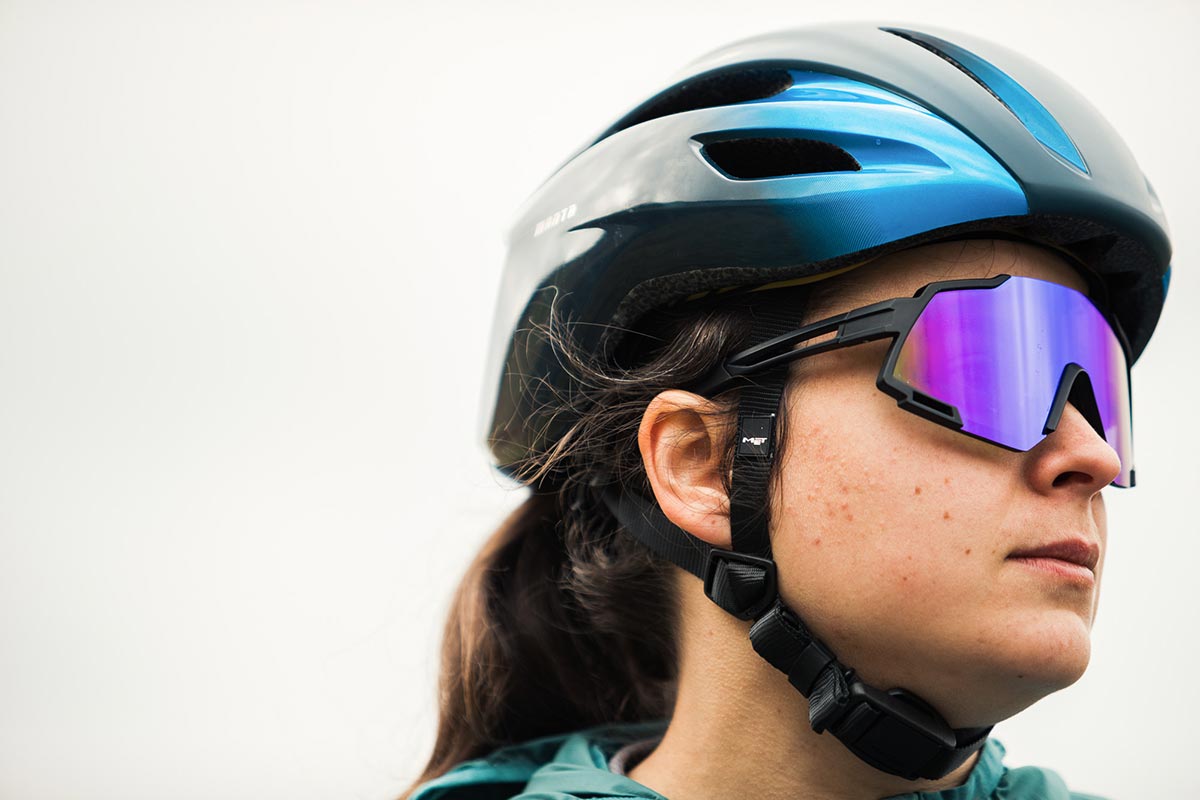 The strap itself is actually far too long for me. Thinking it would be unlikely anyone (wearing the small helmet, at least) would make full use of its length (unless they’ve a huge, bushy beard, maybe) I contacted MET directly about it. They said that strap size does change according to helmet size but that they kept the strap length fairly long on the small helmet for a very good reason…
The strap itself is actually far too long for me. Thinking it would be unlikely anyone (wearing the small helmet, at least) would make full use of its length (unless they’ve a huge, bushy beard, maybe) I contacted MET directly about it. They said that strap size does change according to helmet size but that they kept the strap length fairly long on the small helmet for a very good reason…
Ulysse Daessle said “…being an adult helmet, even if the head circumference is small, the head is sometimes as long as someone using a medium helmet. That’s why we kept a long strap on the small”. He goes on to say, “the MET Manta MIPS has the same strap length as the MET Trenta, and both were developed with the UAE Team Emirates (including Tadej Pogacar, the winner of the Tour de France last year). Thanks to our convenient internal shape, a vast majority of UAE riders are using the Small so they can benefit from a very compact outside shape – and the strap lengths can accommodate all head forms”.
If it is too long, you can tuck up the remainder of the strap neatly underneath a rubber runner. The Fidlock buckle is a great addition, in my opinion. While it may seem over engineered, the benefit is that you can do the strap up with one hand; a feature MET claim actually improves triathlon transition times.
Though the MET Manta MIPS doesn’t have numerous voluminous vents (aero is the priority here), the design really maximizes use of the few there are. The NACA vent system channels air through the helmet and out through a massive exhaust area at the rear, helping to pull hot air away from the rider’s head.
Notably, the vent at the top of the helmet channels air directly over the top of the head so you can actually get a bit of a breeze through that region.
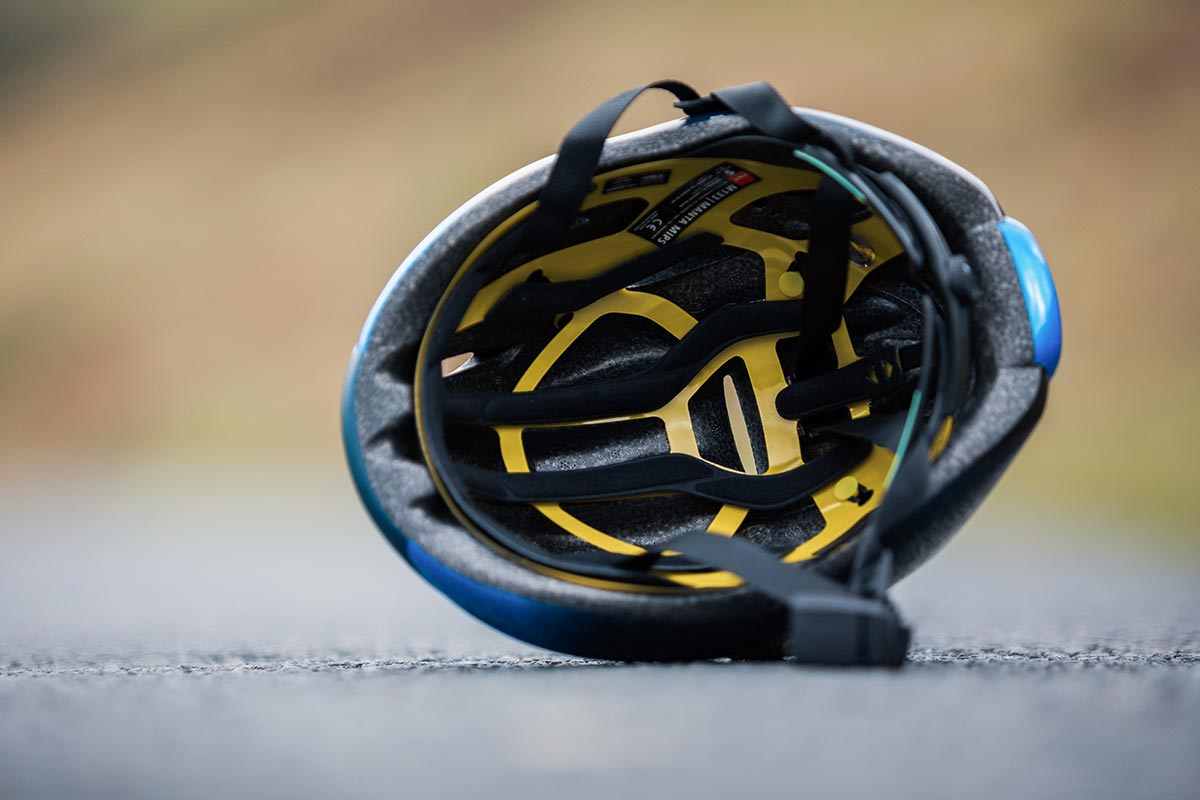
Overall, the MET Manta MIPS is a quality aero road helmet with top-end safety features that we’d be happy to recommend. It’s a comfortable helmet with excellent adjustability that will allow a wide range of cyclists to dial in a perfect fit. Price wise, $300 is about average for an aero road helmet of this quality with MIPS-C2 technology. It is slightly cheaper than the S-Works Evade II MIPS (and a bit lighter), but slightly more expensive than the Giro Vanquish MIPS (but a lot lighter, again).
Pricing & Availability

The MET Manta MIPS is available now for 250€ / £220 / US$300 / CAD$380 / AUS$400 in six colorway options. It comes with a soft, padded drawstring bag to keep the helmet safe from scratches.
• Sizes: S (52-56cm) | M (56-58cm) | L (58-61cm)
• Certifications: CE; AS/NZS; US
There is no official distributor for MET Helmets in the US at this time. But, stay tuned, they will have some exiting news for US customers soon.

